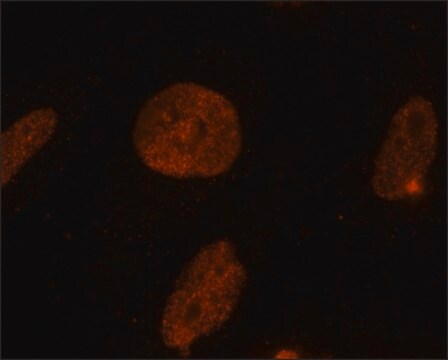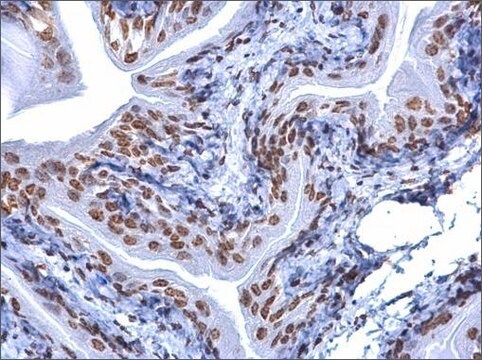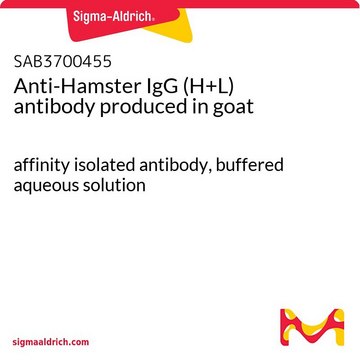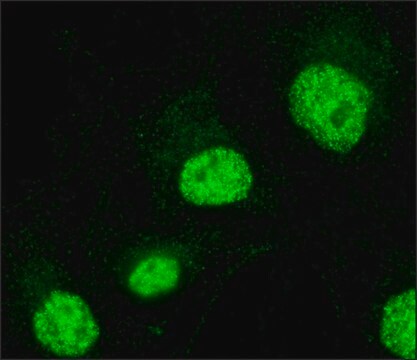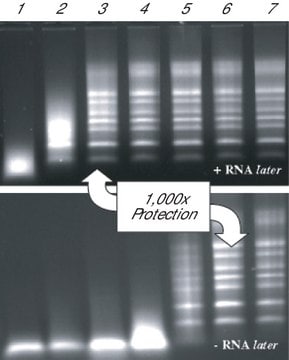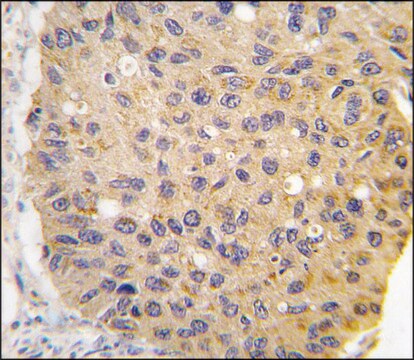SAB4200609
Monoclonal Anti-diMethyl-Histone H3 (diMe-Lys9) (H3K9me2) antibody produced in mouse
~1.0 mg/mL, clone 5E5-G5, purified immunoglobulin
Synonyme(s) :
Anti-H3F3A H3.3A H3F3 PP781 H3F3B H3.3B, Anti-HIST1H3A H3FA, Anti-HIST1H3B H3FL, Anti-HIST1H3C H3FC, Anti-HIST1H3D H3FB, Anti-HIST1H3E H3FD, Anti-HIST1H3F H3FI, Anti-HIST1H3G H3FH, Anti-HIST1H3H H3FK, Anti-HIST1H3I H3FF, Anti-HIST1H3J H3FJ, Anti-HIST2H3A HIST2H3C H3F2 H3FM HIST2H3D
About This Item
Produits recommandés
Source biologique
mouse
Niveau de qualité
Conjugué
unconjugated
Forme d'anticorps
purified immunoglobulin
Type de produit anticorps
primary antibodies
Clone
5E5-G5, monoclonal
Forme
buffered aqueous solution
Poids mol.
antigen ~17 kDa
Concentration
~1.0 mg/mL
Technique(s)
immunoblotting: 2-4 μg/mL using histones isolated from human HeLa cells.
immunofluorescence: 1-2 μg/mL using human HeLa cells.
Isotype
IgG1
Conditions d'expédition
dry ice
Température de stockage
−20°C
Modification post-traductionnelle de la cible
dimethylation (Lys9)
Description générale
Immunogène
Application
Actions biochimiques/physiologiques
Forme physique
Clause de non-responsabilité
Vous ne trouvez pas le bon produit ?
Essayez notre Outil de sélection de produits.
Code de la classe de stockage
10 - Combustible liquids
Point d'éclair (°F)
Not applicable
Point d'éclair (°C)
Not applicable
Faites votre choix parmi les versions les plus récentes :
Certificats d'analyse (COA)
Vous ne trouvez pas la bonne version ?
Si vous avez besoin d'une version particulière, vous pouvez rechercher un certificat spécifique par le numéro de lot.
Déjà en possession de ce produit ?
Retrouvez la documentation relative aux produits que vous avez récemment achetés dans la Bibliothèque de documents.
Notre équipe de scientifiques dispose d'une expérience dans tous les secteurs de la recherche, notamment en sciences de la vie, science des matériaux, synthèse chimique, chromatographie, analyse et dans de nombreux autres domaines..
Contacter notre Service technique
